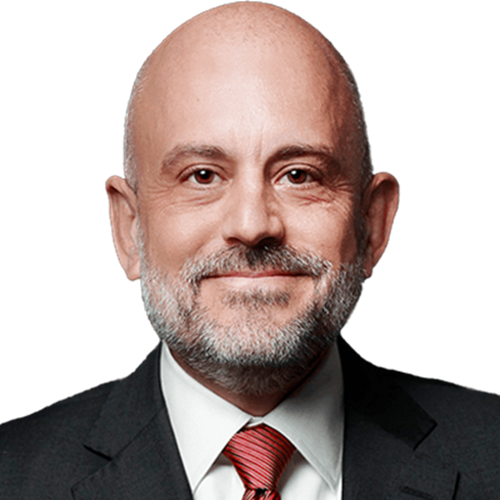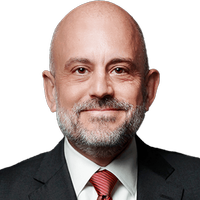6 Things You Can Do Right Now to Ensure Your Money Will Last in Retirement
Your retirement plan needs to take a holistic approach. Because there are so many decisions to make, it’s easy to get lost in the weeds. Follow these six signposts to find your way.

If you’re within six months or so of retirement, there are certain things you need to do now to help prepare yourself for the transition into retirement.
Throughout this retirement preparation process, there will be times when you feel as though you are making a series of rapid-fire micro decisions as you work through Social Security benefits, Medicare options, pension elections and retirement account distributions.
The decisions to be made are many, and understanding the long-term ramifications of those decisions is paramount, considering that your retirement years could be as many as those spent working.
From just $107.88 $24.99 for Kiplinger Personal Finance
Become a smarter, better informed investor. Subscribe from just $107.88 $24.99, plus get up to 4 Special Issues

Sign up for Kiplinger’s Free Newsletters
Profit and prosper with the best of expert advice on investing, taxes, retirement, personal finance and more - straight to your e-mail.
Profit and prosper with the best of expert advice - straight to your e-mail.
The numerous options you will face can become a labyrinth of choices leading many people to attend YouTube university in search for answers, while leaning on friends and co-workers to fill in the missing pieces. The truth is, people underestimate the complexities that exist with preparing for retirement and find themselves over their head.
Unfortunately, without understanding the long-term effects of one decision over another, a retiree may be well into their retirement before problems begin to surface. For instance,
- Inflation will erode your income over time.
- Longevity may require your money to last longer than you thought.
- Market volatility can deplete your resources.
- Heath care expenses can potentially absorb most of what you have.
By the time these risks are exposed, retirees find themselves stuck. That is why retirement planning shouldn’t be viewed as a rapid-fire micro decision-making process but rather a time to design a master plan focused on what you can control and protecting yourself from what you can’t.
Think of it like building a home … you wouldn’t begin construction without first having blueprints drawn up. Your retirement plan is the blueprint for your retirement, while Social Security benefits, Medicare options, pension elections and retirement account distributions are your building materials.
6 Things You Can Do for a Sustainable Retirement
Going back to the home construction metaphor, to ensure you have your bases covered and are retirement ready, first consider the cost of the project. It is better to estimate the cost of your retirement now to uncover potential problems before actually retiring. Start by carefully evaluating your current thinking about your situation.
1. Develop an income plan detailing exactly how much income you will need each year to fund your retirement lifestyle
Now, before skipping over this you should consider that your lifestyle will change — along with your tax situation — which means that the amount you need now to live on will not be the same when you retire. You may need to budget even more for your early years of retirement, when you’ll be enjoying the good life. So, it is not a good idea to make general assumptions about your future income needs based on how things are while you’re working.
Carefully consider what will change and what will stay the same once you retire, adding into the mix such things as travel, health care costs and other variable expenses. You can learn more about this topic in my article, “What is Cash Flow?”
2. Identify your income sources and determine exactly how much income will be generated from each source to satisfy your annual income needs
No generalizations here … you should seek to know exactly how much you can expect from each resource you have.
This is where most people begin to struggle, because there is often a disconnect between their mindset around their assets and the need they have from them. There are generally two camps with this:
- Those who focus on protecting their principal by holding cash.
- And others who hold on to their investment portfolios in hopes for long-term growth.
Both camps are focused on growing or preserving their money, making it difficult for them to adjust for their need to receive consistent income from the assets.
You can learn more about how to generate income from your assets by listening to my Common Sense Financial Podcast episode titled “The #1 Thing That The Most Successful Investors Are Doing With Their Money That The Average Investor Isn’t Even Thinking About.”
3. Map your assets out and separate them by their purpose
What I find is that most people have money sitting in bank accounts, large amounts of equity in their home and money combined together in their investment portfolios.
And while this may seem an ideal arrangement, it is important to point out that cash in the bank is not earning anything, equity in a home is not earning anything and money in the stock market has varying levels of risk … none of which translates to having consistent income in retirement.
In most instances, the assets you have are either going to be spent or used for income now or in the future.
So, a good place to begin would be identifying which assets fall into these categories.
4. Have an income replacement plan in place for your spouse to cover the loss of Social Security or pension income if you were to predecease them
Developing an income strategy for retirement most often means you are relying on a husband and wife’s benefits, but those benefits are only received while both are living (in most cases).
Many people are misled into believing that as you get older your need for life insurance diminishes, and while this may be true for some, for others the need for it may actually rise.
It is a good idea to know the specifics for how benefits will adjust when a death occurs and have a plan in place to replace lost income if it is needed.
5. Have (updated) legal documents in place designating financial power of attorney, medical directives, wills and trusts
Most people kick this can down the road with the idea they will have time to get this done later. (Later meaning when they need it.)
Here is the deal: If you wait until you need these documents it will be too late to get them.
6. Have a contingency plan in place to cover health care costs if you were to find yourself needing long-term nursing care
This is an area that so many people ignore, crossing their fingers and hoping nothing happens to them that would require this level of care. However, considering the cost of nursing care, it is not something to ignore. You need to know how this cost will be covered if you find yourself needing care.
The cheapest way to cover this risk is through insurance, but some may choose to spend down a portion of their assets to cover the costs. Either way, it is a good idea to have this mapped out and know how you plan to cover the cost if incurred.
Wherever you are in your thinking, there is an opportunity to improve your probability for a successful retirement. To get started, figure out where you are, know where you’re going and then identify what obstacles stand in your way.
You can download my Successful Retirement Checklist™ for free and begin using it to score yourself in these areas by clicking here.
Securities offered through Kalos Capital, Inc., Member FINRA/SIPC/MSRB and investment advisory services offered through Kalos Management, Inc., an SEC registered Investment Advisor, both located at 11525 Park Wood Circle, Alpharetta, GA 30005. Kalos Capital, Inc. and Kalos Management, Inc. do not provide tax or legal advice. Skrobonja Financial Group, LLC and Skrobonja Insurance Services, LLC are not an affiliate or subsidiary of Kalos Capital, Inc. or Kalos Management, Inc.
Securities offered only by duly registered individuals through Madison Avenue Securities, LLC. (MAS), Member FINRA & SIPC. Advisory services offered only by duly registered individuals through AE Wealth Management (“AEWM”), a registered investment adviser. Skrobonja Financial Group, LLC, Skrobonja Insurance Services, LLC, AEWM and MAS are not affiliated entities. The article and opinions in this publication are for general information only and are not intended to provide specific advice or recommendations for any individual. We suggest that you consult your accountant, tax or legal adviser with regard to your individual situation.
Profit and prosper with the best of Kiplinger's advice on investing, taxes, retirement, personal finance and much more. Delivered daily. Enter your email in the box and click Sign Me Up.

Brian Skrobonja is a Chartered Financial Consultant (ChFC®) and Certified Private Wealth Advisor (CPWA®), as well as an author, blogger, podcaster and speaker. He is the founder and president of a St. Louis, Mo.-based wealth management firm. His goal is to help his audience discover the root of their beliefs about money and challenge them to think differently to reach their goals. Brian is the author of three books, and his Common Sense podcast was named one of the Top 10 podcasts by Forbes. In 2017, 2019, 2020, 2021 and 2022, Brian was awarded Best Wealth Manager. In 2021, he received Best in Business and the Future 50 in 2018 from St. Louis Small Business.
-
 Dow Hits New High Then Falls 466 Points: Stock Market Today
Dow Hits New High Then Falls 466 Points: Stock Market TodayThe Nasdaq Composite, with a little help from tech's friends, rises to within 300 points of its own new all-time high.
-
 The Best Vanguard Bond Funds to Buy
The Best Vanguard Bond Funds to BuyInvestors seeking the best Vanguard bond funds can pick between mutual funds and ETFs spanning maturities, credit qualities, tax treatment and geographies.
-
 Are You Afraid of an IRS Audit? 8 Ways to Beat Tax Audit Anxiety
Are You Afraid of an IRS Audit? 8 Ways to Beat Tax Audit AnxietyTax Season Tax audit anxiety is like a wild beast. Here’s how you can help tame it.
-
 Feeling Too Guilty to Spend in Retirement? You Really Need to Get Over That
Feeling Too Guilty to Spend in Retirement? You Really Need to Get Over ThatAre you living below your means in retirement because you fear not having enough to leave to your kids? Here's how to get over that.
-
 Strategies for Women to Maximize Social Security Benefits
Strategies for Women to Maximize Social Security BenefitsWomen often are paid less than men and live longer, so it's critical that they know their Social Security options to ensure they claim what they're entitled to.
-
 This Is How Early Retirement Losses Can Dump You Into Financial Quicksand (Plus, Tips to Stay on Solid Ground)
This Is How Early Retirement Losses Can Dump You Into Financial Quicksand (Plus, Tips to Stay on Solid Ground)Sequence of returns — experiencing losses early on — can quickly deplete your savings, highlighting the need for strategies that prioritize income stability.
-
 How an Elder Law Attorney Can Help Protect Your Aging Parents From Financial Mistakes
How an Elder Law Attorney Can Help Protect Your Aging Parents From Financial MistakesIf you are worried about older family members or friends whose financial judgment is raising red flags, help is out there — from an elder law attorney.
-
 Q4 2025 Post-Mortem From an Investment Adviser: A Year of Resilience as Gold Shines and the U.S. Dollar Dives
Q4 2025 Post-Mortem From an Investment Adviser: A Year of Resilience as Gold Shines and the U.S. Dollar DivesFinancial pro Prem Patel shares his take on how markets performed in the fourth quarter of 2025, with an eye toward what investors should keep in mind for 2026.
-
 Is Your Emergency Fund Running Low? Here's How to Bulk It Back Up
Is Your Emergency Fund Running Low? Here's How to Bulk It Back UpIf you're struggling right now, you're not alone. Here's how you can identify financial issues, implement a budget and prioritize rebuilding your emergency fund.
-
 An Expert Guide to How All-Assets Planning Offers a Better Retirement
An Expert Guide to How All-Assets Planning Offers a Better RetirementAn "all-asset" strategy would integrate housing wealth and annuities with traditional investments to generate more income and liquid savings for retirees.
-
 7 Tax Blunders to Avoid in Your First Year of Retirement, From a Seasoned Financial Planner
7 Tax Blunders to Avoid in Your First Year of Retirement, From a Seasoned Financial PlannerA business-as-usual approach to taxes in the first year of retirement can lead to silly trip-ups that erode your nest egg. Here are seven common goofs to avoid.
